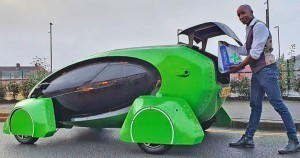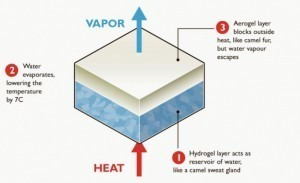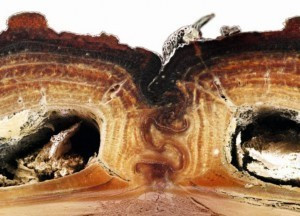2021: A year of joys, changes and regrets?
As the new year begins, we are allowed to make predictions, both gloomy and optimistic. In the USA, at the time of publication of this issue of "Galvanotechnik", there will be a new president, Joe Biden, who will be a much better friend of Europe than his predecessor D. Trump. President Trump has simply not appreciated his allies, whether Canada, Germany or South Korea. He has often been quite unfriendly to their governments.
President Biden has more sense and better manners, he will value NATO - but keep up the pressure on partners, including Germany, to contribute their full share. On Germany to pay its full share of NATO contributions, which some NATO partners have not done in the past. I will not name names! As for ex-President Trump, we can predict a really exciting new year for him. After he loses his special presidential privileges, there are dozens of federal and state agencies that will be investigating his tax and other business affairs. I predict that what they uncover will make it very unlikely that D. Trump (who will be 79 years old by then) will run for re-election in 2024. And I don't think any of his family will either.
In 2021 we will be almost completely free of the Covid virus. There may still be small local outbreaks, but restrictions will be a thing of the past. Developing vaccines in less than a year is a scientific miracle. But there are still things that scientists are not sure about. For example, whether it is better to give two full doses 4 weeks apart or a smaller dose followed by a larger dose? Or perhaps two doses of one type of vaccine first, then a second dose of another type. But these questions will be answered very soon.
In 2021, I think Germany will come under pressure on two fronts. Firstly, on the issue of Huawei equipment for 5G. Most Western nations now agree that it is simply too risky for security reasons to install this Chinese equipment. And secondly, Germany is coming under slight pressure with regard to the Nordstream 2 underwater pipeline from Russia. This huge project is almost finished and abandoning it would be very costly. But at a time when Russia is behaving so aggressively on the world stage (and when we are trying to decarbonize our economy anyway), this energy source gives President Putin enormous power. These are two difficult choices for German politicians.
When we return to normality, will things be as they were in 2019? Almost certainly not. Everyone agrees that the growth of online shopping, as opposed to visiting the high street, will continue.
Modern drone technology
 Fig. 1: Delivery droneThetechnology of delivering these purchases with autonomous vehicles willalsocontinue to develop, both with wheeled vehicles and drones in the air. Our newspapers now use the acronym WFH without bothering to explain it as "Working from Home" and as a result, commuting on trains and buses has declined. Rail and bus companies will have to reduce their timetables. And finally, more and more restaurants and takeaways are now delivering hot meals to our homes. There is also a new term for this, the so-called "dark kitchen". They may be located in an industrial area and will never be seen by their customers. A team of couriers deliver the meals to our homes. Many fear that city centers will become deserted, and rents for city center stores have already fallen sharply.
Fig. 1: Delivery droneThetechnology of delivering these purchases with autonomous vehicles willalsocontinue to develop, both with wheeled vehicles and drones in the air. Our newspapers now use the acronym WFH without bothering to explain it as "Working from Home" and as a result, commuting on trains and buses has declined. Rail and bus companies will have to reduce their timetables. And finally, more and more restaurants and takeaways are now delivering hot meals to our homes. There is also a new term for this, the so-called "dark kitchen". They may be located in an industrial area and will never be seen by their customers. A team of couriers deliver the meals to our homes. Many fear that city centers will become deserted, and rents for city center stores have already fallen sharply.
More and more warehouses are being built, with both new and existing warehouses being automated. Almost 1 million Britons have lost their jobs this year, about half in retail - stores that will never reopen, and the other half in the so-called hospitality sector - restaurants, takeaways and hotels. How many of these will reopen is uncertain. During the pandemic, technology has evolved, particularly the way we deliver our purchases to our homes and businesses. The UK Post Office (Royal Mail) is starting to use drones to deliver to the more remote parts of the UK. A few weeks ago, a drone made its first successful delivery from the UK mainland to the Isles of Scilly. It completed the 100km round trip and delivered medical supplies to St. Mary's Airport.
The Isles of Scilly Steamship Group (ISSG) said the flight paved the way "for a vital new link" to the remote islands off Cornwall. The unmanned vehicle (Fig. 1) returned to Land's End Airport with local produce, including gin and flowers. Currently, most cargo is transported to the islands by ship, with other goods being carried on planes along with passengers. Drones could transport medical supplies and urgent vehicle parts, among other things.
 Fig. 2: The new autonomous delivery vehicle Kar-Go In the far north of Scotland, there are small clusters of people living on small islands. Royal Mail is legally obliged to deliver to every address in the country, but some live several miles from the nearest road. The cost of delivering a few letters or parcels can be 50 to 100 euros. The use of drones could be much cheaper.
Fig. 2: The new autonomous delivery vehicle Kar-Go In the far north of Scotland, there are small clusters of people living on small islands. Royal Mail is legally obliged to deliver to every address in the country, but some live several miles from the nearest road. The cost of delivering a few letters or parcels can be 50 to 100 euros. The use of drones could be much cheaper.
The autonomous delivery of household goods within cities continues to develop. A few months ago I reported on the small delivery robot, a six-wheeled vehicle the size of a baby carriage, now in use in Milton Keynes UK and elsewhere and manufactured by Starship Technologies (www.starship.xyz). A slightly larger of these vehicles, called "Kar-Go", is under development at the UK Academy of Robotics(www.academyofrobotics.co.uk) (Fig. 2). It successfully completed its first run in London in November. It has sophisticated navigation technology and part of the mechanical drive system has been purchased from Tesla USA. It is slightly smaller than a small car and is designed to transport parcels rather than larger products such as washing machines.
Brexit
Last month I wrote - incorrectly - that we would know the outcome of the negotiations between the EU and the UK by the time the December issue of Galvanotechnik came out. A month later, we are still no wiser. The Irish Prime Minister claimed that the two sides had successfully reached 97% of the agreement. I have no idea how he arrived at that exact figure and I believe he was wrong. There are still very big differences between the two sides. You can summarize the situation very simply. The UK wants to become (as it has been in the past) a fully independent state. With full freedom to make its own decisions on a wide range of issues. The EU, on the other hand, demands that the UK remains closely tied to the EU - a quasi-satellite in terms of almost all EU regulations, whether health and safety, employment law (vacations, working hours), state aid for businesses and much more. The EU is demanding that all disputes be decided by an EU court, in which the UK would have no say. The EU is also demanding that the UK should not only follow EU rules (which it currently does), but also that in a process known as 'dynamic alignment', the UK must automatically follow should the EU change such rules in the future. All this under the umbrella of the so-called "level playing field". Finally, although the UK would have legal control over its coastal waters under international law as a so-called "Independent Coastal State", the EU is demanding the right for French, Dutch and other EU fishing boats to fish in UK waters. Britain will certainly find it difficult to accept such terms and no sensible person is predicting the outcome of the negotiations. If the negotiations fail, the UK and the EU will trade under WTO (World Trade Organization) rules, with tariffs of 10% on cars, 30% on dairy products, around 50% on meat products, etc. Each side has the right to reduce these tariffs, but only on the condition that if, for example, the tariff on cheese is reduced to 15% or even zero, this lower tariff must be applied to all cheese imports, whether from the EU or the US.
The most important negotiations now concern trade. But there are fears that the rift between the EU and the UK will deepen in other ways too. Early on, Brussels decided that the UK would no longer be involved in the Galileo satellite project, even though the UK had already invested large sums in this project. Other non-trade matters, such as the exchange of information on crime and terrorism, may also be downgraded, as will the exchange of students and professors. No one is quite sure what the impetus for this is, but it is certainly a cause for much sadness and regret here in the UK. Our wish for 2021 is that the warm and friendly relationship between the EU and the UK remains or is rebuilt. We share a 2000 year old heritage, we share common threats and even our own DNA, as recent research has shown, is largely identical. Let's hope our politicians can preserve at least some of it.
Climate change and hydrogen
 Fig. 3: Evaporative cooling mimics camel skin Now that President Trump has hopefully packed his bags and left the White House, President Biden has made it clear that he cares as much about climate change as most of us here in Europe. The US will rejoin the Paris Climate Agreement and launch its own program to reduceCO2 emissions. One point in which the USA differs from Europe is the very widespread use of air conditioning systems with their enormous energy requirements. Whereas in Europe, energy consumption is highest in winter and lowest in summer, the opposite is true in the USA. So can we keep cool in summer and use less energy in the process? The answer is yes. At the height of summer, in the Sahara, camels continue to carry heavy loads, as they have done for centuries. But how do they do it?
Fig. 3: Evaporative cooling mimics camel skin Now that President Trump has hopefully packed his bags and left the White House, President Biden has made it clear that he cares as much about climate change as most of us here in Europe. The US will rejoin the Paris Climate Agreement and launch its own program to reduceCO2 emissions. One point in which the USA differs from Europe is the very widespread use of air conditioning systems with their enormous energy requirements. Whereas in Europe, energy consumption is highest in winter and lowest in summer, the opposite is true in the USA. So can we keep cool in summer and use less energy in the process? The answer is yes. At the height of summer, in the Sahara, camels continue to carry heavy loads, as they have done for centuries. But how do they do it?
Scientists have invented a cooling technology in the form of a flexible material about a centimeter thick that could be attached to buildings or shipping containers to cool the contents without electricity. Tests indicate that the material can maintain a temperature about 7°C lower than the ambient air. The technology is based on the camel, a desert animal that has to cope with harsh conditions. It may seem counterintuitive, but when a camel wanders through arid terrain, its ability to protect itself from overheating relies on a shaggy layer of fur. This acts as an insulator and forms a barrier against the heat outside, while at the same time releasing water vapor from the sweat glands in the skin into the surrounding air. The camel rarely sweats, but when it does, the two layers of skin and fur complement each other, maximizing the camel's ability to keep cool and limiting the amount of water it loses.
The new technology mimics the camel's fur and hair. It consists of two layers, the lower of which consists of a hydrogel substance that acts as a water reservoir. During evaporation, this is released as steam and absorbs heat in the process. Above this replacement sweat gland is a layer of aerogel, an ultra-light, insulating substance that functions similarly to the camel's fur. "Zoologists have reported that a shorn camel must increase water consumption by 50 percent during the day to sweat, compared to a camel with a natural wool coat," said Jeffrey Grossman, head of the Department of Materials Science and Engineering at the Massachusetts Institute of Technology and one of the lead authors of the study. "So to minimize water loss while maintaining the cooling effect of evaporation and thus prolong cooling performance over longer periods of time, we took our cue from nature." The principle is illustrated in Figure 3. An alternative technology consisting only of the hydrogel layer was able to maintain a slightly lower temperature, but the two-layer approach lasted significantly longer.
Source: "Passive Sub-Ambient Cooling from a Transparent Evaporation-Insulation Bilayer" Zhengmao Lu, Elise Strobach et al. Joule Lu et al. Vol. 4, 1-9 December 16, 2020 ª 2020 https://doi.org/10.1016/j.joule.2020.10.005
Radiative cooling
While previous work was based on evaporative cooling, highly reflective white paint is known to cause so-called radiative cooling. Scientists in America claim that a paint that keeps buildings cooler than their surroundings could reduce the need for air conditioning. The newly developed paint, which can reflect 95.5% of sunlight, has been found to reduce temperatures by 1.5°C compared to the ambient temperature. The new paint not only sends heat away from the surface, but also projects this heat into the depths of the room instead of being held in the atmosphere and contributing to global warming. The inventors claim that the new paint could be applied to road surfaces, roofs and cars. There are already reflective paints on the market, but the newly developed composition is even more efficient. The researchers evaluated more than a hundred different materials, but finally decided on a mixture that is rich in calcium carbonate. The particles vary in size, allowing the color to scatter over a wide range of wavelengths. Another plus point: the newly developed paint is said to cost less than the standard reflective paints on the market.
Source: "Full Daytime Sub-ambient Radiative Cooling in Commercial-like Paints with High Figure of Merit": Cell Reports Physical Science Vol 11 Issue 10 (Published in issue: October 21, 2020) Xiangyu Li et al.
DOI: https://doi.org/10.1016/jxcrp. 2020.100221
Replacing natural gas with hydrogen
Hundreds of homes in Scotland will be the first in the world to have their heating and cooking needs met by pure hydrogen after a €32 million trial was funded by the energy regulator. Around 300 homes in the Levenmouth region of Fife, Scotland, will have free hydrogen-powered boilers and stoves installed and connected to a new pipeline network that will supply them with 100 percent green hydrogen. The gas will be produced by electrolysis, using electricity from a wind turbine to split water into hydrogen and oxygen. The first households are due to be connected in 2022, with the trial initially running for four and a half years. It will be carried out by the gas network company SGN, which has been awarded the contract. Decarbonizing UK homes is a major challenge as around 80 percent of homes use natural gas heating, which emits carbon dioxide that causes global warming. Hydrogen has often been suggested as a possible solution because it is clean burning. Although boilers and stoves would need to be replaced, hydrogen boilers could be used in conjunction with existing central heating systems. Proponents say this would be less disruptive than switching to all-electric heating systems, such as heat pumps.
It could also allow the continued use of existing gas networks, which would be beneficial for companies such as SGN, which supplies gas to 5.9 million homes and businesses in Scotland and southern England.
Among the high costs of this demonstration project was the fact that the boilers and stoves would have to be almost hand-built, but in themselves would cost no more than today's natural gas appliances. The hydrogen will be generated using an existing seven megawatt wind turbine in Levenmouth, and a storage facility will be built to hold enough hydrogen to supply the three hundred homes for five days without wind generation. As a backup solution, the electrolysis could be powered by electricity from the national grid.
Selective metal coating of 3D-printed plastic
 Fig. 4: Using a two-nozzle printer for selective coating of ABS3D-printedplastic parts can be precisely nickel-plated if the plastic is pre-doped with a catalyst before printing, according to scientists at Waseda University, Japan. This is an alternative to a conventional technique in which a simple plastic object is coated with a catalyst after production and then immersed in an electroless metal plating solution. To improve adhesion, a roughening or etching step can be added before the catalyst coating.
Fig. 4: Using a two-nozzle printer for selective coating of ABS3D-printedplastic parts can be precisely nickel-plated if the plastic is pre-doped with a catalyst before printing, according to scientists at Waseda University, Japan. This is an alternative to a conventional technique in which a simple plastic object is coated with a catalyst after production and then immersed in an electroless metal plating solution. To improve adhesion, a roughening or etching step can be added before the catalyst coating.
"This method is actually an improvement over the conventional metallization process used to coat 3D plastic structures with metal," the university said. Although the conventional approach is technically sound, it produces a metallic coating that is uneven and adheres poorly to the plastic structure. The new technique does not require any type of roughening or etching to promote the deposition of the catalyst. These additional steps result in damage to the 3D object and the use of toxic chemicals such as chromic acid.
Instead, the researchers used a fused filament printer with two nozzles and printed ABS from one nozzle and ABS doped with the catalyst precursor palladium chloride (PdCl2) from the other. The doped plastic is only used to build up surfaces, where metallization is required later. The concept is shown in Figure 4.
Despite the absence of a roughening step, the adhesion of the metal coating was high, according to the university. Part of the improvement comes from overcoming the hydrophobic nature of ABS, which naturally rejects the dip-coated palladium in the conventional process and is the reason for roughening to increase wettability and porosity.
A significant amount of palladium was used in the proof-of-concept process - the doped ABS contained 9 wt% PdCl2. The catalyst concentration was found to strongly influence the rate of metal deposition. Waseda University collaborated with Nanyang Technological University and Yoshino Denka Kogyo. The published paper also describes the nickel coating of electrospun ABS fibers.
Source: "Metal-plastic hybrid 3D printing using catalyst-loaded filament and electroless plating" JingZhan, Additive Manufacturing Vol 36, December 2020, 101556
https:// doi.org/10.1016/j.addma.2020.101556
Learning from nature: a crush-resistant armored beetle
 Fig. 5: The cross-sectional view shows the puzzle-like connection between the individual elytra on the diabolic armored beetle The so-called diabolic armored beetle has a crush-resistant exoskeleton that enables it to withstand up to 39,000 times its body weight, according to researchers at the University of California, Irvine. The researchers actually ran over the beetle twice with a Toyota Camry and watched it run away later. This is shown in a recent issue of the journal Nature.
Fig. 5: The cross-sectional view shows the puzzle-like connection between the individual elytra on the diabolic armored beetle The so-called diabolic armored beetle has a crush-resistant exoskeleton that enables it to withstand up to 39,000 times its body weight, according to researchers at the University of California, Irvine. The researchers actually ran over the beetle twice with a Toyota Camry and watched it run away later. This is shown in a recent issue of the journal Nature.
A video of the experiment shows the 1.5-ton car rolling over the beetle on an asphalt driveway - an incredible demonstration of its toughness. The beetle briefly plays dead under the tire, then twitches its antennae and runs away thanks to its super-strong exoskeleton.
The two-inch-long beetle with six legs and a bumpy, iron-gray carapace that can't be smashed may look scary, but it's actually a harmless and remarkable result of evolution.
Researchers at Purdue University and the University of California, Irvine spent years analyzing the super-strong beetle, known in Latin as Phloedes diabolicus. In the process, they chopped up many beetles and examined their shells at the microscopic level to see how they are put together. They found that the armored beetle's best defense is its elytra, which are the sheaths that cover the wings on its back. All beetles have these parts, but the devilish carapace beetle stopped using its wings millions of years ago and hardened its elytra. The armored beetle's wing covers are fused together at the seam in the middle, where a series of interlocking seams ensure that they can withstand a force of up to 149 Newtons. The seam works like a jigsaw puzzle. It connects different exoskeleton lamellae (puzzle pieces) under the wing covers. When you break a puzzle piece, you expect it to come off at the neck, the thinnest part. But this type of catastrophic split is not seen in this species of beetle. Instead, it delaminates, which makes for a more graceful failure of the structure. Delamination means that it splits into layers instead of breaking directly.
The researchers say that we humans can learn a lot from this little armored car, especially if we can adapt its puzzle design for other structures and materials.
Source: "Diabolical ironclad beetles inspire tougher joints for engineering applications" Po-Yu Chen Issue : Nature. Vol. 586, 502-504 (2020).
https:// media.nature.com/original/magazine-assets/d41586-020-02840-1/d41586-020-02840-1.pdf
Address of the author
Dr. Anselm T. Kuhn,
c/o Metal Finishing Service Ltd,
105 Whitney Drive, Stevange, Herts, SG14BL/England;
Fax: +44/1438-906306, e-mail:
Editor's note:
The political content printed in "Letter from England" does not necessarily reflect the views of the publisher and editors, but are the personal opinions of the author.


